How to glue the backdrop to the aquarium?

Aquariums are an excellent piece of furniture. If you pick up attractive and unpretentious fish, then watching their life will be one pleasure. Usually, aquariums are decorated with various plants and buildings, snags. Another way to improve its appearance is to stick a background on its back wall.
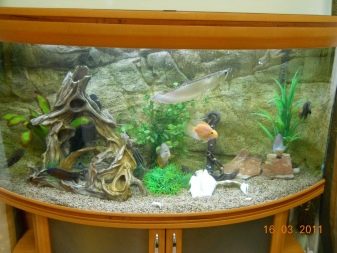
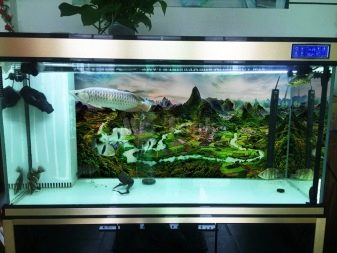
The purpose of the background and methods of fixing it
The aquarium is decorative. The background will help not only improve the overall impression, but also hide the wall, wires and equipment behind an artificial reservoir. The pattern in the background makes the space appear deeper. The background helps to reduce the amount of glare on the water, giving the fish house a more natural look. If you choose the right image, the inhabitants of the aquarium will feel much more comfortable.
Aquarium backdrops are quite affordable and are sold at most pet stores. The film allows you to quickly and easily improve or simply change the appearance of the container. The use of such a decor is especially important in cases where the aquarium does not stand tightly against the wall. This arrangement usually causes discomfort to the fish. Moreover, when observing an aquarium, a translucent room distracts attention too much.
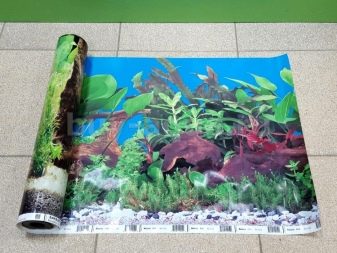

You can glue the background to the aquarium inside or outside the back wall. The inner looks much more natural. It is important to use a product made from environmentally friendly, non-toxic material. The background is set inside the aquarium before water is poured into it. It is important to secure it properly so that it does not fall on the fish.
Usually, the interior background is represented by volumetric polyurethane foam panels.Various natural textures are used, for example, stone or wood. Cleaning such backgrounds is necessary, but the process is quite time consuming. It should be borne in mind that this design slightly conceals the volume of the aquarium, like any interior decor.
.



The external background is more common due to its availability. There are fewer requirements for the material, because it does not come into contact with water and the inhabitants of the aquarium. For fixation, use different adhesives or just scotch tape. The advantage is that such a background is not spoiled by overgrowing algae. Films are sold in a very wide assortment and can be either monochromatic or multi-colored or with patterns.
Modern backgrounds for external gluing can have a 3d effect. The only drawback of the film is difficult replacement. If glue-based decor is used, it will be quite difficult to remove it. It is better to think over the desired result well before decorating the back wall.


How to prepare the glass?
Usually, for decoration, films are used that are attached to the outer part of the back wall. The glass needs to be carefully prepared for the decorating procedure in order to get a really attractive result. If the aquarium is new, simply remove the back wall and degrease it.

The preparation of the glass, if the aquarium is used, is carried out as follows.
- Transfer the fish to a suitable container.
- Drain and remove all decorative items, soil.
- Rinse the inside of the aquarium in the usual way.
- Treat the outside of the rear wall with glass cleaner. You can also use another cleaner. The main thing is to clean the surface of dust, dirt, grease as much as possible.
- Dry it with paper towels.
- Immediately start pasting with a decorative background so that the glass does not become covered with dust particles again.



Required materials and tools
Setting up the background for the aquarium with your own hands takes literally 10-20 minutes, depending on the size of the container. To complete the work, you need to prepare such materials.
- Decorative sticker or panel... It is better to choose a self-adhesive version of the film.
- Scissors, ruler and pencil. All this will help to cut the workpiece to the desired size.
- Glycerin or liquid soap for solution preparation. The first option is needed when fixing a film without an adhesive layer. Soapy water will help to adhere the self-adhesive beautifully.
- Plastic card... Used instead of a trowel to smooth the material.
- Soft, lint-free cloth... To wipe the glass, use a piece of cloth that will not leave dust or debris.
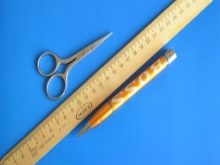

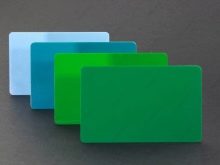
A brush is needed to work with glycerin. Moreover, it must first be well cleaned of possible debris. If a soapy solution is used, then a spray bottle is needed. It is better to put a cloth or film under the aquarium.
It is important to arrange the place for such work as comfortably as possible.

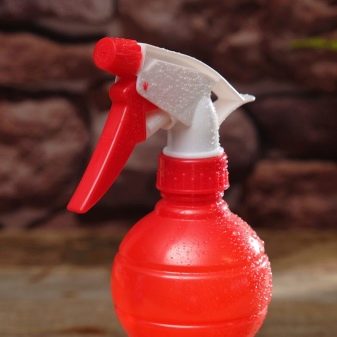
Step-by-step instruction
Gluing the aquarium background correctly at home is not as difficult as it might seem at first glance. Take your time to avoid redoing your work.
- Check the back of the aquarium and draw an outline on the decorative vinyl. Use sharp scissors to cut out the blank for decoration.
- Before gluing, you need to cut 3 mm of the film from 2 sides.
- Dry the glass at the back of the aquarium. Take a spray bottle and prepare a soapy solution. You can use both shampoo and regular liquid soap for mixing. Stir everything well to form a foam. Thoroughly spray the glass to which the film will be glued.
- Remove the protective layer from the decorative self-adhesive. Place the background against the outside of the aquarium wall.
- If the first attempt is unsuccessful and the tape is not flat, just try again. This will be easy thanks to the soapy water on the glass.
- Align the top edge of the film.
- Call someone for help, it will be quite difficult to proceed on your own.It is necessary to stretch the lower part of the background so that it does not stick. With gentle movements, you need to gradually straighten the vinyl film using a special spatula or plastic card.
- You need to act with pressure. This will not spoil the film, and the work will go faster. Movement should go from the center to the edges, from the top to the bottom.



The basic method involves the use of an adhesive film. However, you can decorate the aquarium using ordinary stationery tape. The method is quite simple, but short-lived. The overall impression of the background will deteriorate when exposed to water. The easiest way to use a background without glue.
- Degrease the wall surface.
- Place the backdrop against the aquarium and line up the top edge. Secure with tape.
- Smooth the fabric from top to bottom and to the sides with gentle strokes.
- Attach the other 3 sides with tape.


The flexible background without a sticky layer can be fixed with regular glycerin, which is sold in pharmacies. Mineral oil is an alternative. You need to act like this.
- Secure one edge of the decorative pattern to the wall of the aquarium with tape.
- Cover the glass with glycerin. It is convenient to apply the product with a brush or hands. In the first case, be sure to first thoroughly clean the instrument from fluff and dust.
- Gradually press the background against the smeared surface.
- Use a spatula or plastic card to smooth out any unevenness.
- Excess glycerin should be wiped off with a towel or paper towel.
- For reliability, tape the edges with tape.



In most cases, the background is glued to the outside of the aquarium, but you can place it inside as well. It is noteworthy that the material should be denser. Silicone sealant is used as an adhesive. The same material is used for gluing glass in aquariums.
Recommendations
To create a beautiful aquarium, you can stick an attractive background to the back wall. Simple tips to help you complete the task as efficiently as possible.
- If you want to stick the film without bubbles, then you need to be as careful about dust as possible. Even a small amount of it on glass can negate all efforts. Spray everything around your work area with a spray bottle to prevent debris from flying onto the film.
- If air bubbles appear after gluing, then it is worth driving them out with a needle and a plastic card. Moreover, it is better to take not a sewing needle, but a thin one from a syringe.
- It is best to try on the background on the aquarium before removing the protective sheet from the adhesive backing. If the aquarium is large, then it is worth fixing the background with tape, and then gluing in parts.
- It is important that the film adheres to the glass as closely as possible. Otherwise, dark spots will be visible. It looks especially bad when you turn on artificial lighting in the aquarium.


For information on how to glue the background to the aquarium, see the video below.








